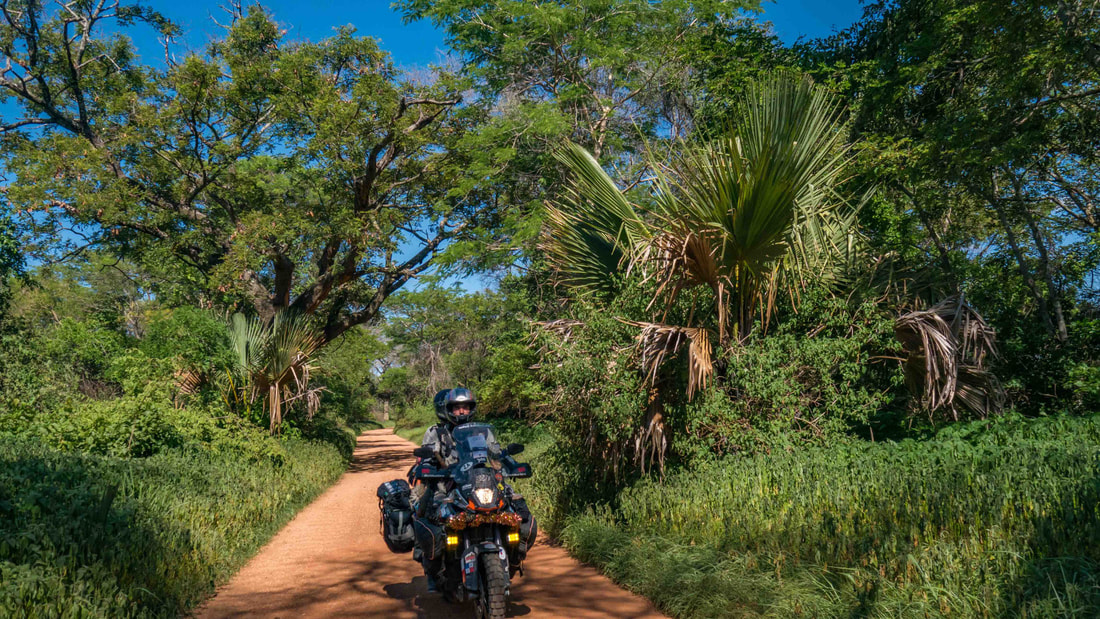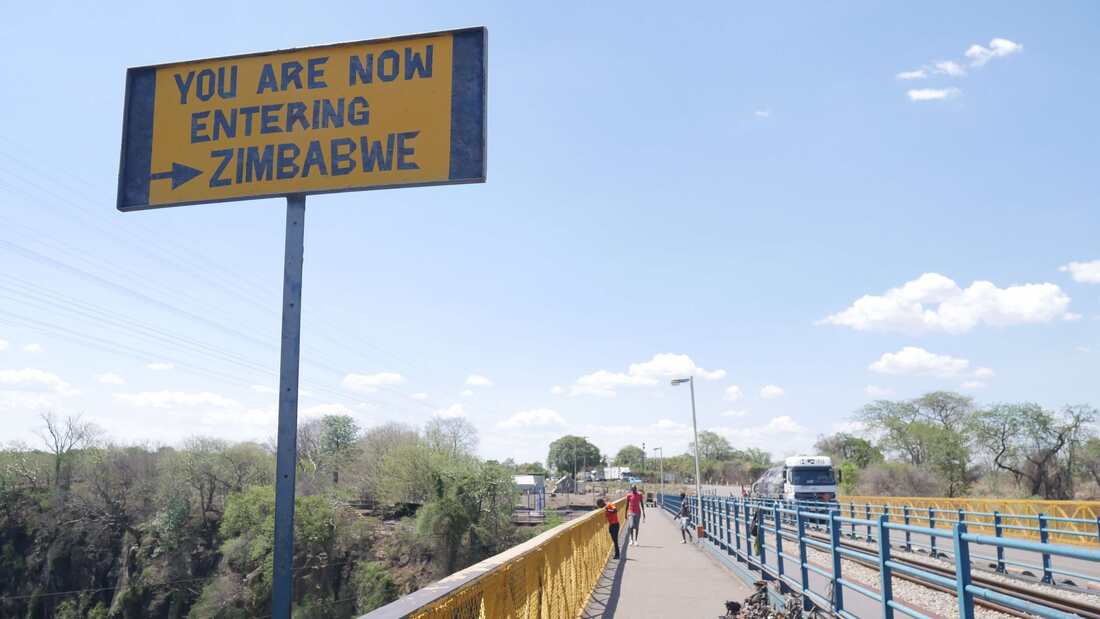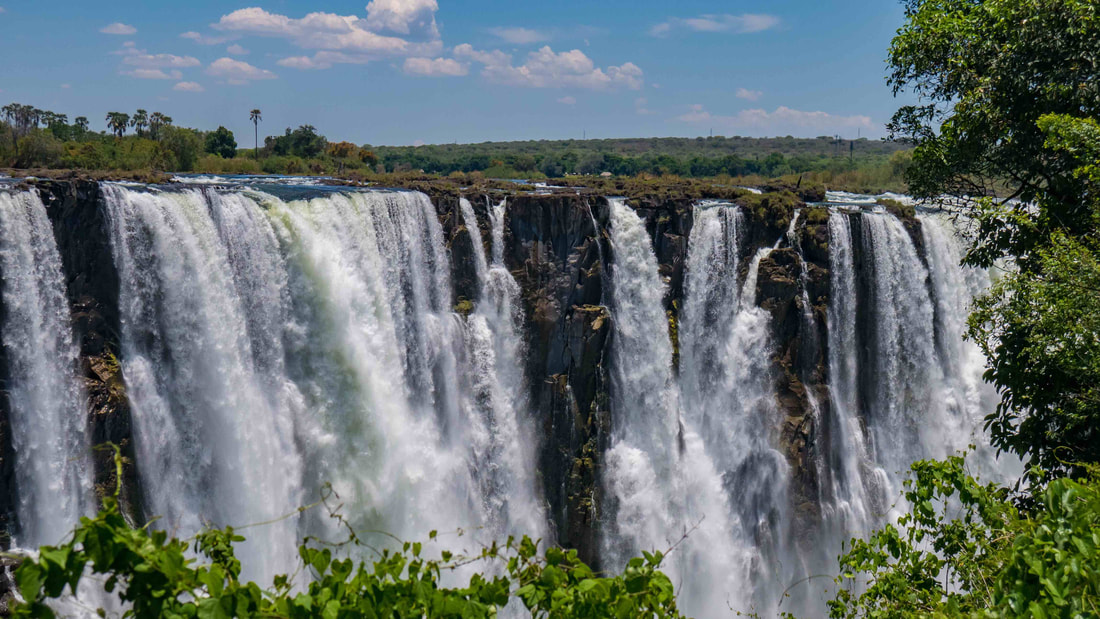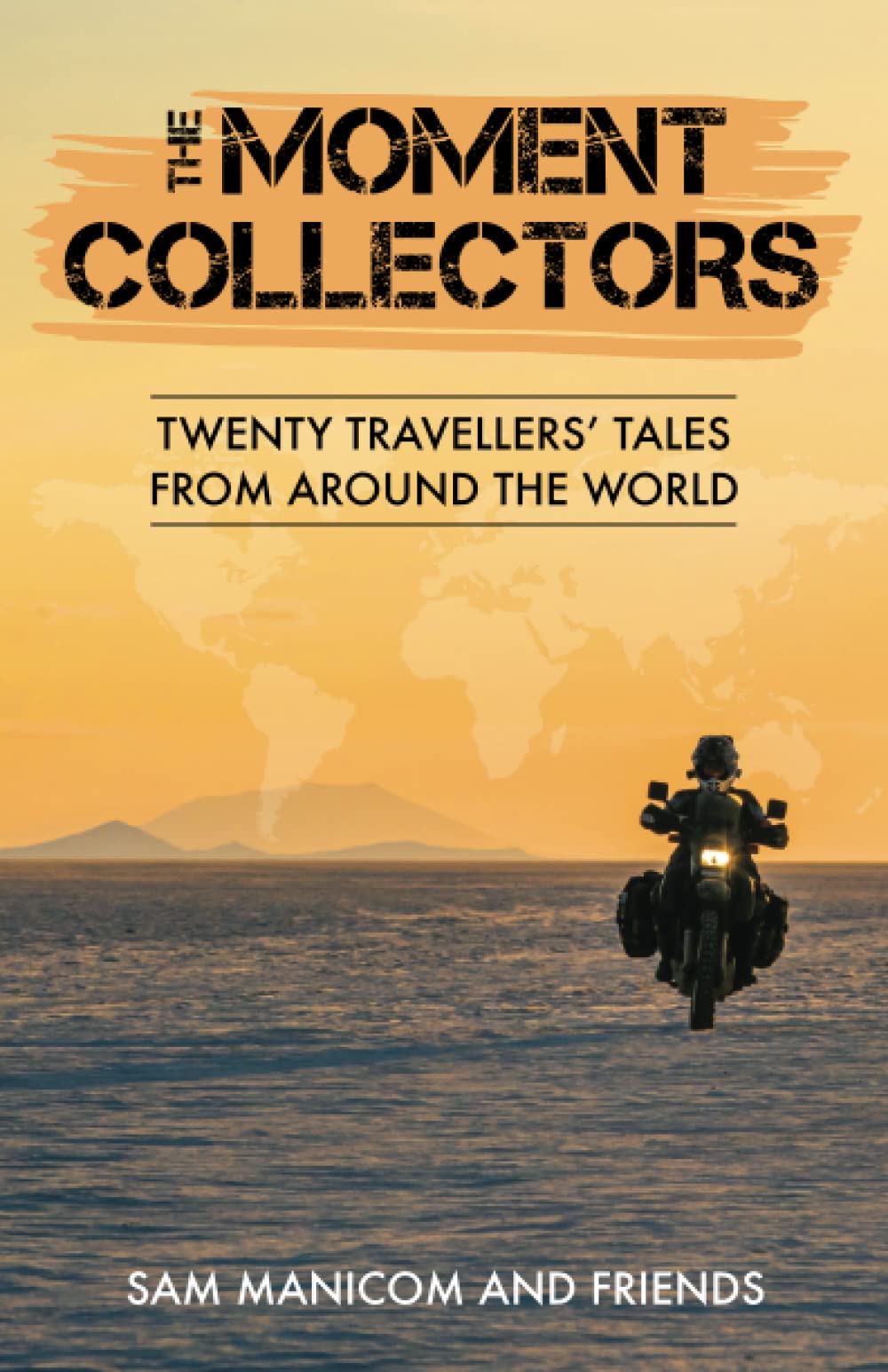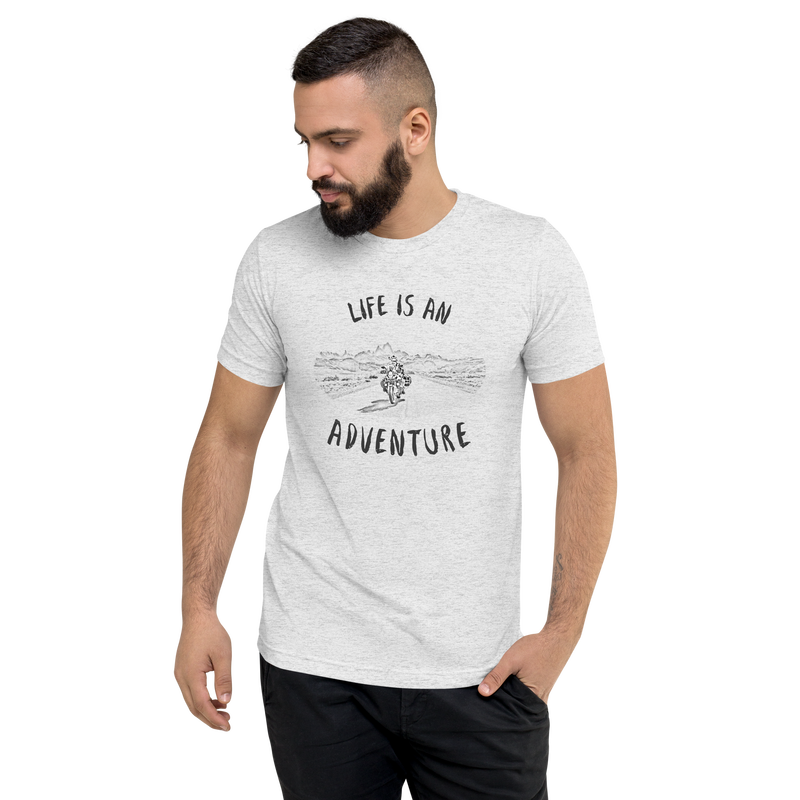By MarisaWe entered Zambia from Botswana through one of the most difficult border crossings we’ve ever experienced. We were traveling with our motorcycle friend, Emiliano, and crossing borders with another traveler usually makes things easier. With three people, two of them can try to figure out the procedures and stand in separate lines, and one can watch the bikes (me). But for some reason, nothing seemed to be easy when it came to the convoluted process that was getting a visa and vehicle entry permit into Zambia. The heat, the lack of signage, the expense of it ($50 USD for a Zambia/Zimbabwe visa, $20 USD for road tax, more money for carbon taxes, insurance, paying fixers, all in Zambian Kwacha), and most of all, the chaos of the place, made it a horrible experience. Nearly five hours later, we had three completely empty wallets, no water left in our water bottles, and no food in our stomachs, but we got through the border. I had spent the entire time watching the bikes and trying to convince a drunk guy that I wasn’t going to buy his fire extinguisher, even though he insisted it was the law that all motorcyclists had to carry one in Zambia. Tim and Emiliano got ripped off by their fixer and they overpaid for Zambian insurance by about $40 a person. It was a disaster, and later on, we were able to report the names of our cheating fixers to the insurance headquarters when we upgraded our COMESA insurance. But at least now we were in Zambia. And I have to say that this border crossing may have been a good introduction to the country. Because in comparison to Westernized South Africa, Namibia, and Botswana, Zambia was the first place that I felt I had truly entered the “Africa” that I had been told about, both the good and the bad. The bad was the chaos of the border: the cheating lies of our “friendly” helpers, the line of stinky trucks on a muddy dirt road, and the water bottles littered everywhere that had been there for so long, they almost looked like mud-covered cobblestones. But the good was more beautiful than I had ever expected. On the other side of the border, the roads were lined in green foliage, bright and rich from the recent rains, and between the trees you could see round mud-brick houses with thatched roofs. Men rode around on old bicycles with baskets of goats, turkeys, chickens, or children on the back. Women wore colorful saris wrapped around their waists as a skirt and sometimes tucked it in over their chest like an oversized bath towel. Their hair would be done up in intricately-designed braids, sometimes dyed in similar colors to their clothes. And to literally top it all off, nearly every woman would be carrying something on top of her head, perfectly balanced on a platform of braids. A tray of bananas or mangoes maybe, or a bushel of corn meal, and a Zambian woman’s purse is always better carried on her head than over her shoulder. Once across the border, I immediately felt that this was the Africa that I had hoped still existed somewhere out there. And as we rode the short ride to Livingstone, I couldn’t help but smile the whole way there. Most tourists come to Zambia for one reason: to see Victoria Falls. As one of the largest waterfalls on earth, Victoria Falls is impressive and it's been a dream destination of mine for a long time. Created by the mighty Zambezi River (which Zambia is named for), the falls are actually split between the countries of Zambia and Zimbabwe, and so there is the eternal debate amongst travelers as to which side is better, and whether it’s necessary to see both. To make things ultra confusing, people often shorten these country names to Zam and Zim when talking about the falls. But despite their similar names, there is a huge difference between Zambia and Zimbabwe, especially at this moment in history. Long ago, they were regions of the same country known as Northern and Southern Rhodesia, but ever since their split, they’ve gone in two different directions. Due to a continued relationship with international communities, Zambia is relatively safe and stable to travel through. But because Zimbabwe has been economically hindered for decades by the controversial policies of its former leader, the revolutionary Robert Mugabe, traveling through this proudly independent country is much more challenging. Even after Mugabe's death in 2019, basic services are still lacking, lines for petrol are long, and crime caused by “machete gangs" are a real problem. So if Victoria Falls were said to be more impressive on the Zimbabwe side, would the risk of going be worth it? It turns out that heading into Zimbabwe for the day just to see Victoria Falls is safe and easy, as the two countries have a visa deal and a strong tourist infrastructure in place, even if it's just in that one spot. Plus, we came to the falls at the worst possible time of year, the end of the dry season, and the Zambia side was said to be just a trickle. So if we wanted to see more than a dry cliff, we’d have to go into Zimbabwe. Visiting Victoria Falls is not cheap. The visa for entering both countries is $50 (called UniVisa), the park entrance fee to Zimbabwe is $30 per person, and for Zambia it’s $20. For two people, that's $200, but for most, the falls are worth it. We went to Zimbabwe first, which was good, because we were so sweaty and tired afterwards, that we never even got to the Zambia side, and didn’t really need to. The views that we saw were certainly enough. The original name for Vic Falls was Mosi-oa-Tunya, meaning “The Smoke that Thunders", and once you're there, you can definitely see why. And there's so much more to do there than just waterfall watching. You can also zip-line across the canyon, bungee jump, take a helicopter ride, white-water raft (Emiliano did it and loved it), or swim to the edge of the falls in something called Devil's Pool. The jumping-off point for most people visiting the Falls is the town of Livingstone in Zambia. Built for tourists, it’s got everything you could want: post cards, people selling knick-knacks on the street, a supermarket, and even a “Starbucks-like” café. The only problem is, like the rest of Zambia, Livingstone doesn’t have consistent electricity. We were lucky while we were there, because the President of Zambia also happened to be in town, which meant they kept the lights, fans, and very slow internet on… most of the time. Livingstone is such a tourist hub, we ended up meeting lots of other motorcycle travelers there, and spent a couple of fantastic days hanging out with Andie. She's a British motorcyclist who lived in Livingstone on and off for years and had all the scoop on what to see and do. She was insanely fun to talk to, and the hours would fly by without us even realizing it. She even gave us talismans carved of the Zambezi River God called Nyami Nyami, who was said to be a serpent-shaped protector of all who go to the river. We could have stayed in Livingstone for much longer, talking with friends, eating free pancakes at our hotel, and swimming in the pool, but Christmas was coming up, and we had other plans. So Emiliano, Tim, and I said our goodbyes to our new friends, packed up, and headed into the heat so explore more of Zambia. Most of Zambia is very rural, and the more east you go, the more mountainous it gets. These vibrantly green mountains hum in the chirps of insects and birds, and between them, sleepy little villages of thatched houses sound of laughing children and smell of burning charcoal. Coming to Zambia, I didn’t really know what to expect out of the country, but I found it to be a breath of fresh air, or at least, humid, hot, sticky air. But the landscape was expansive and vast, with monkeys and baboons out there in the forest, and the lifestyle of the people was simple and comforting. Zambia to me felt like the real-life version of “The Lion Sleeps Tonight" song. You just can't help but smile as you traverse through it. We arrived in the capital city of Lusaka (where we got real vehicle insurance for the real price), and even though we hadn’t wanted to spend Christmas in a dirty, congested city, we did want to have internet to call friends and family. So we stayed at a hostel in an overpriced “chalet” that looked like it was built of sheets of plywood and five nails. The door didn’t properly open or close, and the structure was about to fall over, but I suppose that’s considered a building by Zambian standards. Most people in Zambia, and much of Southern Africa, are Christian, and so Christmas is a big deal. Even though it was summer here, and the sweltering weather didn’t make it feel like Christmas to me, there were Christmas trees and decorations everywhere. So we also decided to get into the spirit and decorated our bike. We also splurged and gave ourselves a nice Christmas Eve dinner of a T-bone steak! But Christmas day was when the real magic happened. We all headed out from Lusaka and decided to wild camp somewhere near the Mozambique border on a hilltop overlooking the other mountains in the distance. It was a gorgeous site, and the sunset was spectacular, but what really made it special was the light show that night. We were in our tent just about to fall asleep when I noticed a firefly glittering above our tent. We had the rainfly off so we could see the stars, but this was so much brighter than a star. Soon came another firefly, and another, blinking very fast, unlike any firefly I had ever seen before. It never just went dark and flew away, but instead gave off a constant blinking glow like Christmas lights. So we got out of the tent and found ourselves in a glittering world of thousands of dancing fireflies illuminating all the rippling hills, with millions of twinkling stars above us, and to put the icing on the cake, a lightning storm was flashing through some clouds in the distance. It was unbelievable. We tried to take a picture, but it just didn’t come out. It was a moment simply to be appreciated for what it was. Now we are in Malawi, so stay tuned for our next blog post on our adventures almost dying in the rain, and getting sick in Mzuzu. We’ll keep you posted! |
Follow UsRide with us from Chicago to Panama!
2Up and Overloaded Get inspired by the tale that started it all:
Maiden Voyage 20 author's tales of exploring the world!
The Moment Collectors Help us get 40 miles further down the road with a gallon of gas!
Become a Patron for early access to our YouTube Videos!
Subscribe to our YouTube Channel!
Subscribe to our Blog by Email
|
2Up and Overloaded
Join our clan of like-minded adventurers...
Proudly powered by Weebly
Designed by Marisa Notier

